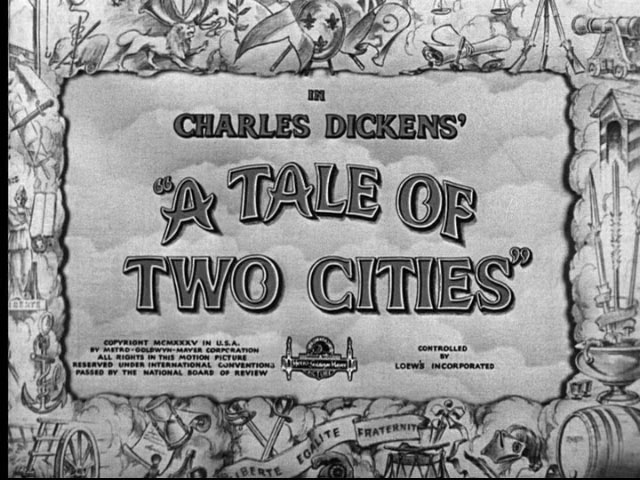
Recently I had a conversation with an intern we have working with us at Coastside Ventures about a business she is considering. An interesting sub-topic of the conversation revolved around keeping costs low, which is a pretty good business practice all around. However, as we were having the dialogue, it became clear that we were mixing costs in our conversation which led to a point where we explicitly worked to separate them and talk about their relative merits.
Generally speaking, keeping costs low in your business is a path to increased profitability. It’s healthy, it’s a good thing. But not all costs are created equal. Some things, like the paper towels in your bathroom, are just that costs. Other things, like the packaging that surrounds your products are something other than simple costs. And other things, like your business cards, may have attributes shared between the paper towels and packaging.
When I think about costs, I tend to think about the things that are required to make the business run. Aside from paper towels referenced above, things like checking accounts, credit card processing, payroll services, storage shelving, shipping, etc. fall into this category. Without them, business is not possible, but aside from having them present, available, and usable, they don’t add any value to your intrinsic business. When it comes to costs, I advise being the biggest cheap-skate you can be and without crossing the line into products/services that are so cheap they don’t work. If you are by nature a penny-pincher, this is the place to be absolutely brutal and non-compromising.
Where one needs to be thoughtful is when the cost in question touches or could touch your customer. For instance, packaging as listed above. Fixtures, bags, labels, lighting, sounds, temperature, etc. Each of these are real costs that may not be directly attributable to your product as cost-of-goods-sold (COGS) but have a direct impact on how your customer or prospective customer experiences your company. This is a place where cheap can frequently have an unintended negative impact on your business. The key for this sort of cost is to view it as an investment in the customer experience seeking a balance between achieving the objective of advancing your business vs. the cost of the items required to deliver that experience as a percentage or ratio of sales. This is a place to be thoughtful, compromising, and consistent in terms of what you want your experience to be and what you want your brand to project.
There is a third aspect of this which is to understand when something from a “pure cost” category moves into something closer to an investment in customer experience. This is tricky because there are no hard and fast rules to adhere to. I’ll give 2 examples. If you have a public restroom available to customers, procuring the cheapest paper towels and soap might not be such a good idea. Why? Because your customers will experience that as part of your business and will notice the relative lack of quality in this area which could be a net negative impact to their experience. The second example is credit card processing. Sure, you can go get the lowest possible rate with a soul-less, common swiper/printer machine. However, think about the impact of having a customer use an iPad coupled with a Square reader – it could be the first time that this customer ever touches such a device and it says something about your business. There are clearly cheaper approaches to these topics, but at what price to your customer experience and brand?
So, to summarize this post: not all costs are created equally. Separate your costs into true costs to be cheap about, costs that you might want to make tradeoffs on for customer experience, and be sensitive to costs that may change over the course of your business and anticipate/respond accordingly. Good luck in your business!

While the politicians in Washington were busy playing brinksmanship with the national economy, the “real” world went through the same cycle seen each January. For those lucky enough to make more money than the Social Security threshold (about $110,000 in 2012) started paying into the system again taking their net pay down. In addition this year, the “payroll tax holiday” was revoked so that everyone who pays into the social security system faced a 2% increase in their deductions or rather, a 2% reduction in their net income.
What does this mean in real terms? For an individual making $60,000/year their contribution rises from around $2,500/year to about $3,700/year. The employer, which must match the contribution sees the same increase in real dollars to pour into the system. While the debate raged on about raising taxes on those making more than $250,000/year and up, a real tax increase slipped through with very little in the way of public discourse or outcry. Curious that.
In addition, in California we saw sales tax rates increase state-wide by 0.25% in January, and many local governments had sales tax measures pass as well. For instance, in Half Moon Bay, the City had a 0.5% sales tax increase pass and San Mateo County had another 0.5% sales tax increase pass on the ballot. Practically, this means as of April 1, 2013, the sales tax rate will have increased from 8.25% to 9.5% for those who shop in Half Moon Bay, the second highest sales tax rate in California as an aside.
While payroll taxes are painful, sales taxes are doubly so. Why you ask? Because the money you are using to purchase those goods and services have already been taxed through the payroll system. I’m not an anti-tax nut, I believe we need to have money that we contribute into a common pool to provide for infrastructure and services that make society possible. However, I do think we need to make some fundamental choices about how we pay tax and what rates are sustainable for the average tax payer out there.
To start, we ought to make a choice about the total tax load (Federal, State, and Local) that will provide for the infrastructure and services we desire. Right now, it’s nearly impossible to determine what one’s tax rate is because we have payroll taxes, mandatory payroll deductions, “insurance” deductions, property tax, bond measures, sales taxes, use taxes, use fees, etc. I can’t prove it, but I suspect that over 50% of the average person’s wages are allocated to taxes, fees, and the like and that is not sustainable in the long run.
What we should consider is what can afford with 25% of GDP as a tax/fee/whatever threshold and then allocate that 15% to the Feds, 5% to the State, and 5% to the localities to pursue the people’s business. Once we have that in view, make a decision about how to levy those taxes – property taxes and use taxes might be the most equitable way of generating that funding (people do tend to have shelter and do tend to buy things to survive.) Do away with the other hidden taxes and fees and exempt no one (inclusive of corporations with person status) from contributing.
On the flip side, our public servants would need to do the work to sequence, prioritize, and optimize the shared investment we’re making in our government to ensure that the people’s priorities are reflected in that investment. With the rates we’re talking about, government at all levels would be forced to shrink. An additional side benefit of this approach, is it would like remove government interference on topics the government shouldn’t be engaged in anyway. It would also likely force some actual decisions on things like the efficacy of pennies, paper bills, drug policy, etc.
This will likely never happen, but it doesn’t hurt to dream. Right?
Coming back to the real world, we see this situation reflected in the shop at a micro-economics level. If an average month of sales has a value of 1, December was fantastic with 1.8 performance. On the flip side, consumers feeling a holiday hangover and the bite of less available cash have helped turn in a 0.4 performance in January. Even worse, the cost of labor has increased by 2% with the expiration of the payroll holiday. Couple lower sales and consumer confidence with higher costs and taxes, and you don’t have a recipe for great fiscal performance.
At over 700 words, this entry is done. I’ll rant again some other day. Back to your regularly scheduled programming.

As I age, the passage of time seems to accelerate. The years are flying by so fast now it seems tough to keep track of what happened when. Years are fading into decades; things that happened 20 years ago seem just like yesterday. It’s like a jump to hyperspace. Given that this is happening now, if I survive into my 80’s, what will it be like? Scary to consider.
As one of my favorite characters said: “It’s not the years, honey, it’s the mileage.” Right now I’m feeling each year at least twice and every mile three times…….
That being said, if you’re not moving, changing, and growing, you’re dead. So it’s time to climb back in the saddle and get on with it. What does 2013 have in store? Who knows, the best laid plans go awry once you start executing them. But when I look back on this year I hope to have made some positive impact and made life on this rock a little better in some way.
No resolutions or meaningless promises for 2013. Just a commitment to step in, grind it out, and show up every day with an attempt to be truly present at each step along the way. That’s the plan. Wish me luck.

This month has made the classic book opening of a Tale of Two Cities ring true “It was the best of times, it was the worst of times.”
Since Half Moon Bay is really a Halloween town, we thought that perhaps we’d seen the peak of the season in October, particularly with an overall sluggish November from a sales point of view (excepting Black Friday which was our busiest day ever.)
We learned a bunch over this season doing some things well by plan, some things well by accident, some things poorly by plan, and some things poorly by accident. I would rather minimize the accidents, happy and unhappy and maximize the planned events – that’s all part of learning though.
From a sales volume perspective, if an average month’s sales equals 1, then December surprised us by being almost 2. That’s nearly a 100% increase over a normal month. While this is a great turn of events for a month, it does have some downside on the product/inventory side when that increase was far greater than forecast, we were scrambling to replenish inventory mid-season – something we’ll try to minimize going forward.
From a labor perspective, we did not adequately prepare for the busy week days we saw during December. Next year, we will beef up our staffing to accommodate the relative increase in business activity. We did OK over the weekends and with special events (Night of Lights, Winter Art Walk, Christmas Eve, and weekends) but we struggled a bit with normal week days where the sales activity far eclipsed “normal” levels.
One thing we think we did right was to establish, maintain, and continue to build relationships with our visitors. The busy December we had would not have been possible without the many return visitors, many of them local to the coast, coming back to do their shopping with us. This leaves us feeling ultra grateful to the community for their tangible support and even more determined to keep moving along this path.
While the macro level economists are saying this was a “lack luster” holiday season, we see it as a great success at the micro level. Not only was Oddyssea busy, but we noticed many of the Main Street merchants with full stores, cafes, and restaurants and that’s a very good thing. We’ll share more when we know more. We certainly learn new things each and every day and that makes it fresh and fun!
Thanks to everyone who has visited the shop, for your encouragement and patronage, it is deeply appreciated.








